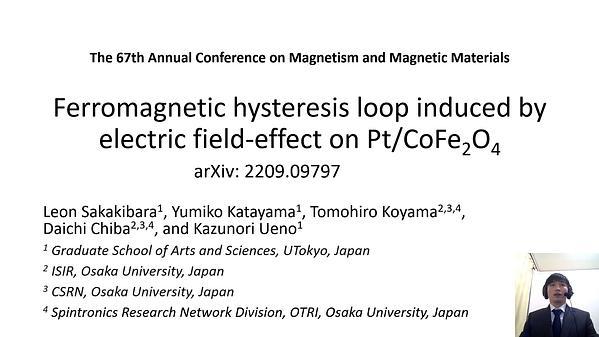
Premium content
Access to this content requires a subscription. You must be a premium user to view this content.

technical paper
Role of the thermal magnetization fluctuation in depinning of domain wall from constraints on the ferromagnetic nanowire
It is important to understand physically how to reliably control the domain wall (DW), because the promising applications such as solid-state spintronic memories utilizing
DW displacements along ferromagnetic nanowires (NWs) 1 are directly connected to the reproducibility of repeatable DW motion. As those are based on operations at room temperature,
extensive studies on how the thermal effect on DW depinning can be controlled by various geometrical and methodological considerations should be required for enhancing controllabilty
of the DW motion. In the previous study, we have found that their depinning fields from artificial constraints (notches) on ferromagnetic NWs can be experimentally oscillated under a
magnetic field HT transverse to the nanowire 2. Interestingly, this study is focused on the thermal fluctuation of the 2D magnetization (M) vector, m(r,t)=mx
(r,t)x+my
(r,t)y 3. Figure
1(a) shows noise spectra in magnetization components at specific frequencies under HT. Figure 1(b) depicts schematics of thermal M fluctuation at each frequency corresponding to Fig.
1(a), which means the red region indicates the highest magnetization fluctuation at each mode. It is clearly seen that the specific modes of thermal M fluctuations in the DWs exist and the
trend of tilting-angle difference between magnetizations at mode 4 of Fig. 2(a) is consistent with that of depinning field from notches as shown in Fig. 2(b). This depinning behavior is
related to the thermal M fluctuation in the DWs pinned at the notches, as confirmed by a micromagnetic simulation.
References
1 S. Parkin and S. –H. Yang, Nature Nanotech. 10, 195 (2015).
2 S.-M. Ahn et al., J. Nanosci. Nanotechnol. 11, 6472 (2011).
3 N. Smith, J. Appl. Phys. 90, 5768 (2001).

Fig. 1 (a) Noise spectra in magnetization components (mx and my
). (b) Schematic maps of thermal M fluctuations at specific frequencies, (1) 1.52 GHz, (2) 2.28 GHz, (3) 3.58 GHz, and
(4) 4.52 GHz.

Fig. 2 (a) Tilting-angle difference for the depinning field with respect to HT (simulation). (b) The depinning field as a function of HT. Inset : High resolution image of U-shaped 350-nm- wide Permalloy nanowire structure with double notches.

